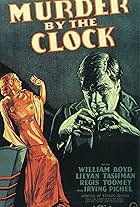Few early film documentaries came under severe criticism that their creators manipulated 'actors' to perform age-old customs no longer practiced. These documentaries examining distant cultures, called ethnographic films, were produced to show remote cultures whose people went through their daily lives that included old traditions and practices-but in actuality they had long abandoned them and had succumbed to modern conveniences.
The newly formed Congo Pictures took this manipulation to an entirely new level. Claiming to be a film document of a recent British expedition to the Belgian Congo, March 1930's "Ingagi" detailed several African tribes and the hunting forays they undertook to feed themselves. Towards its end, the producers revealed a strange ritual where tribal members selected one female to be sacrificed to the wild gorillas nearby. The drama is captured on film by a movie crew hidden in the jungle brush.
During "Ingagi's" California preview, a viewer recognized one of the "natives" on the screen. She knew the black actress from Central Casting and made her discovery public. Once the movie was released nationwide, others saw familiar footage from the 1915 film 'Heart of Africa,' made during Lady Grace MacKenzie's journey to the continent-the first white woman to organize an expedition into central Africa. The 15-year-old footage MacKenzie assembled appeared scratchy on the screen, while "Ingagi's" other scenes were crisp and clear. Even mammalogists in the audience questioned the 1930 expedition's discovery of a new breed of a venomous reptile: a "tortadillo." This strange animal was claimed to be a cross between a tortoise and an armadillo.
Further research pointed out the leader of this expedition, Sir Hubert Winstead of the Royal Geological Society, as well as an American sportsman, Captain Daniel Swayne, did not exist, nor was there any known journey of such an expedition from any organization was undertaken. Research also discovered there existed no word in any African language where "Ingagi" means gorilla, never mind the term meaning anything anywhere.
The Better Business Bureau stepped in to attempt to stop the widespread distribution of the RKO film. The Hays Office tried to stop "Ingagi's" distribution, but to no avail. Even the Federal Trade Commission began its own investigation into the movie and found out that much of the animals in the film were rented from the Selig Zoo, and were filmed in wooded areas nearby, including at Los Angeles' Griffith Park. "Ingagi" also contained scenes of supposed pygmies, who were really local children, five to ten years of age wearing make-up living in the L. A. area.
The controversial last 15 minute segment showing gorillas romping around with the native women was one of the movie's main selling points. It was later learned the head gorilla who takes the sacrificial woman was actually a man, Charles Gemora. He had appeared in 10 previous movies, including Lon Chaney's 1929 "Where East is East," wearing his convincing gorilla suit and acting like one.
In the end, despite a number of attempts to stop "Ingagi" from being shown, theaters showing it drew massive crowds, setting box office records. The adage that "there is no such thing as bad publicity" proved especially true in this mockumentary exploitation film, eventually grossing well-over $4 million for RKO Pictures. Such success gave other studios an incentive to produce a number of "gorilla-and-the-maiden films," including one classic by RKO, 1933's "King Kong."
















